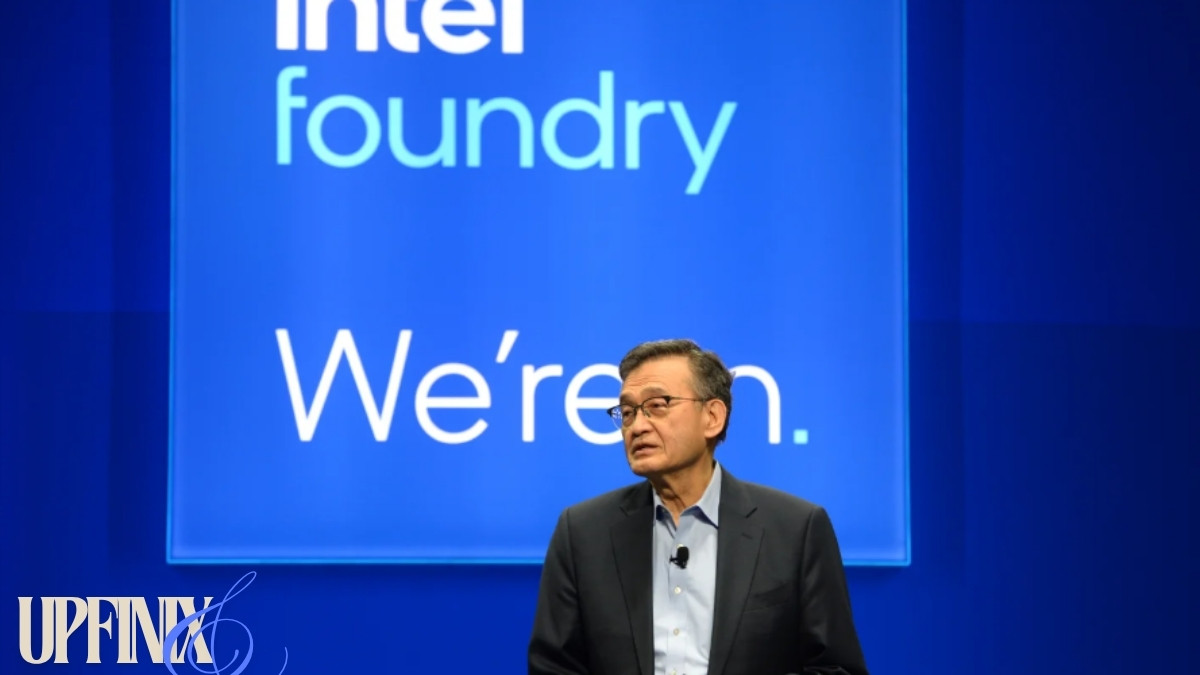Are you considering a career at Amazon or curious about how much its employees earn? As one of the world’s largest and most influential companies, Amazon employs over 1.5 million people globally and is renowned for its competitive compensation packages. However, navigating the complexities of Amazon’s salary structure can be daunting. This article provides a detailed, up-to-date exploration of Amazon salaries in 2025, covering pay by role, level, and location, along with benefits, comparisons with other tech giants, and tips for negotiating your salary. Backed by reliable sources like Glassdoor, Levels.fyi, and Business Insider, this guide aims to help you make informed decisions about your career at Amazon.
Table of Contents
Overview of Amazon’s Compensation Structure
Amazon’s compensation package is designed to attract and retain top talent, consisting of several key components:
- Base Salary: The fixed annual pay, which varies by role, level, and location. In 2022, Amazon raised its base salary cap for corporate workers to $350,000 from $160,000 to stay competitive (SHRM).
- Sign-On Bonuses: Paid out over the first two years, these bonuses incentivize new hires to join and stay with the company.
- Restricted Stock Units (RSUs): Equity compensation vests over four years (5% in year 1, 15% in year 2, 40% in years 3 and 4), encouraging long-term commitment (Carrus).
- Performance Bonuses: Tied to individual and company performance, these are more common for high performers under Amazon’s new 2025 pay structure.
In 2025, Amazon introduced a revised compensation model that rewards employees with consistent high performance over multiple years, offering up to 110% of their pay band for those rated “Top Tier” for four consecutive years (India Today).
Salaries by Role
Amazon offers a wide range of roles, from technical positions like software engineering to operational roles like warehouse associates. Below are salary ranges for key roles in the US, based on data from 2025:
| Role | Salary Range (USD) |
|---|---|
| Software Development Engineer | $126,000 – $263,700 |
| Data Scientist | $92,040 – $230,900 |
| Product Manager – Technical | $136,843 – $235,200 |
| Warehouse Associate | $37,000 – $42,000 |
| Area Manager | $73,000 – $94,000 |
| Vice President Operations | $1.2M – $2.7M (India) |
These figures represent base salaries for foreign hires in the US, as reported in H-1B visa filings, and do not include equity or bonuses, which can significantly increase total compensation.
Salaries by Level
Amazon uses a leveling system (L4 to L10) to categorize roles based on experience and responsibility. Below are total compensation ranges for software engineers at different levels in the US, based on data from Levels.fyi (updated July 24, 2025):
| Level | Role | Total Compensation (USD) | Base Salary | Stock (yr) | Bonus |
|---|---|---|---|---|---|
| L4 | Software Development Engineer I | $179,000 | $162,000 | $4,100 | $12,600 |
| L5 | Software Development Engineer II | ~$253,000 | $188,000 | $58,100 | $6,900 |
| L6 | Software Development Engineer III | ~$258,000 | $231,000 | $21,400 | $5,600 |
| L10 | Distinguished Engineer | $1,660,500 | N/A | N/A | $0 |
Higher levels, such as L7 (Principal SDE) and above, typically require significant experience and are often filled internally (Interviewjoy).
Salaries by Location
Amazon adjusts salaries based on the cost of living in different locations. Below are examples of software engineer salaries in key US cities:
| Location | Role | Total Compensation (USD) |
|---|---|---|
| Seattle, WA | SDE I (L4) | $159,300 |
| San Francisco, CA | Software Engineer (L4-L8) | $199,000 – $1,270,000 |
| New York, NY | Software Engineer | $120,000 – $173,000 |
Salaries in high-cost areas like San Francisco are typically 10-20% higher than in Seattle due to cost-of-living adjustments. Internationally, salaries in India range from ₹1.8L to ₹70L ($2,200-$85,000) for roles like customer service associates to software engineers (AmbitionBox).
Comparison with Other Tech Companies
Amazon’s salaries are competitive but may be slightly lower than those at other FAANG companies like Google and Meta. Below is a comparison of total compensation for entry-level software engineers in the US:
| Company | Level | Total Compensation (USD) |
|---|---|---|
| Amazon | L4 | $179,000 |
| L3 | $196,000 | |
| Meta | E3 | $192,000 |
The median total compensation for software engineers is $255,000 at Amazon, $294,300 at Google, and $366,000 at Meta, indicating that Meta and Google may offer higher pay, particularly at senior levels (Levels.fyi).

Benefits and Perks
Amazon offers a comprehensive benefits package starting on day one for full-time employees, including:
- Health Insurance: Medical, dental, and vision coverage, with digital physical therapy services (Amazon).
- Retirement Plans: 401(k) with a 50% match on the first 4% of base salary, vesting after three years (Levels.fyi).
- Paid Time Off: Up to 88 hours of PTO, including vacation and personal time, plus parental leave of up to 20 weeks for birth mothers (Amazon).
- Career Choice Program: Prepaid education and training for high-demand fields (Amazon).
- Employee Assistance Program (EAP): 24/7 mental health support, financial management, and legal counseling (AmbitionBox).
- Employee Discounts: 10% off Amazon.com purchases, up to $100 annually (Amazon).
In 2025, Amazon enhanced its mental health benefits, earning the Platinum Bell Seal for Workplace Mental Health from Mental Health America (Amazon).
How to Negotiate Salary at Amazon
Negotiating a salary at Amazon requires preparation and strategy:
- Research Market Rates: Use platforms like Levels.fyi and Glassdoor to understand salary ranges for your role and level.
- Highlight Your Value: Emphasize your skills, experience, and alignment with Amazon’s leadership principles.
- Consider Total Compensation: Factor in RSUs and sign-on bonuses, as these can significantly boost your package.
- Be Flexible: Amazon’s compensation structure is rigid, but you may negotiate sign-on bonuses or relocation assistance (Carrus).
Recent Changes in Amazon’s Salary Policies
In 2025, Amazon introduced a new pay structure that rewards long-term high performers. Employees rated “Top Tier” for four consecutive years can earn up to 110% of their pay band, while first-time top performers receive 70% (India Today). Additionally, a pilot program allows employees to convert up to 25% of their stock grants to cash. The performance review system now incorporates Amazon’s 16 leadership principles, with managers evaluating employees on a three-tiered scale, impacting raises and promotions (Business Insider).
Frequently Asked Questions (FAQs)
1. What is the average salary for a software engineer at Amazon in 2025?
The average salary for a software engineer at Amazon in 2025 varies by level and location. According to Levels.fyi, total compensation ranges from $179,000 for entry-level Software Development Engineers (SDE I, L4) to $1.66 million for distinguished engineers (L10). The median total compensation for software engineers in the US is approximately $255,000, which includes base salary, stock, and bonuses. For example, an SDE I earns a base salary of around $162,000, with $4,100 in annual stock and a $12,600 bonus. In contrast, an SDE II (L5) earns about $253,000, with a base of $188,000, $58,100 in stock, and a $6,900 bonus. These figures are higher in high-cost areas like San Francisco, where total compensation can reach $304,000 on average (Levels.fyi). Salaries are influenced by performance, with top performers potentially earning more under Amazon’s new 2025 pay structure, which rewards consistent excellence (India Today).
2. How does Amazon’s compensation compare to other FAANG companies?
Amazon’s compensation is competitive but often slightly lower than that of other FAANG companies like Google and Meta, particularly at higher levels. For entry-level software engineers, Amazon’s L4 total compensation is around $179,000, compared to $196,000 at Google (L3) and $192,000 at Meta (E3) (Levels.fyi). The median total compensation for software engineers is $255,000 at Amazon, $294,300 at Google, and $366,000 at Meta, suggesting Meta offers the highest pay on average. Google and Meta tend to provide larger equity grants, which significantly boost total compensation, especially for senior roles. For example, a senior software engineer at Meta can earn up to $480,000 in base salary alone, while Amazon’s equivalent (L6) has a total compensation of around $258,000 (Business Insider). However, Amazon’s comprehensive benefits, such as the Career Choice program, and its focus on long-term performance incentives make it a strong contender (Amazon).
3. Do Amazon salaries vary by location?
Yes, Amazon salaries vary significantly by location due to cost-of-living adjustments. In high-cost areas like San Francisco, software engineers earn a median total compensation of $304,000, compared to $255,000 nationally (Levels.fyi). For example, an SDE I in Seattle earns around $159,300, while in San Francisco, the range for software engineers spans $199,000 to $1.27 million, depending on the level (Levels.fyi). In New York, salaries range from $120,000 to $173,000 for software engineers (ZipRecruiter). Internationally, salaries in India are lower, with software engineers earning ₹25L to ₹45L ($30,000-$55,000) annually (AmbitionBox). These variations reflect local economic conditions and Amazon’s strategy to remain competitive in different markets.
4. What benefits does Amazon offer in addition to salary?
Amazon provides a robust benefits package starting on day one for full-time employees, enhancing its appeal as an employer. These include health insurance (medical, dental, vision), a 401(k) with a 50% match on the first 4% of base salary, up to 88 hours of paid time off, and up to 20 weeks of parental leave for birth mothers (Amazon). The Career Choice program offers prepaid education for high-demand fields, and the Employee Assistance Program provides 24/7 mental health and financial support (AmbitionBox). In 2025, Amazon expanded mental health benefits, earning recognition from Mental Health America (Amazon). Employees also receive a 10% discount on Amazon.com purchases, up to $100 annually. These benefits, combined with competitive salaries, make Amazon an attractive employer, though some employees note that health insurance plans can have high deductibles (Glassdoor).
5. How often do Amazon employees receive raises?
Amazon employees typically undergo annual performance reviews, with midyear evaluations possible, to determine raises and promotions. In 2025, Amazon introduced a stricter review system that assesses adherence to its 16 leadership principles, job performance, and future potential, resulting in an Overall Value score that influences compensation (Business Insider). Raises are not guaranteed annually and depend on performance ratings, with top performers eligible for up to 110% of their pay band (India Today). Employees rated “Top Tier” consistently over four years receive the highest raises, while lower performers may face performance improvement plans. The frequency and amount of raises vary by role, level, and manager discretion, with some employees reporting raises as high as 19% in their first year, though this is not typical (Quora).
6. Is there a difference in salary between full-time and contract workers at Amazon?
Yes, there is a significant difference in compensation between full-time and contract workers at Amazon. Full-time employees receive a comprehensive package, including base salary, RSUs, sign-on bonuses, and benefits like health insurance and retirement plans. For example, a full-time software engineer (L4) earns around $179,000 in total compensation (Levels.fyi). In contrast, contract workers, such as independent contractors or those hired through agencies like Amazon Flex, are typically paid hourly and do not receive benefits like health insurance or equity. The average hourly pay for an Amazon independent contractor is $39, equating to about $120,258 annually, but this can range from $90,193 to $168,361 (Glassdoor). Contract workers may earn competitive hourly rates but lack the long-term financial benefits of full-time roles, and their compensation can vary widely based on role and location (Salary.com).
Conclusion
Amazon salaries in 2025 reflect the company’s commitment to attracting top talent with competitive pay and comprehensive benefits. From software engineers earning $179,000 to $1.66 million to warehouse associates earning $37,000 to $42,000, compensation varies widely by role, level, and location. While Amazon’s pay may be slightly lower than that of Google or Meta, its benefits, such as the Career Choice program and enhanced mental health support, add significant value. The new 2025 pay structure and performance review system emphasize long-term excellence, offering higher rewards for top performers. If you’re considering a career at Amazon, understanding these factors can help you negotiate effectively and plan your career path. Share your thoughts or experiences in the comments below, or subscribe to our newsletter for more career insights!









